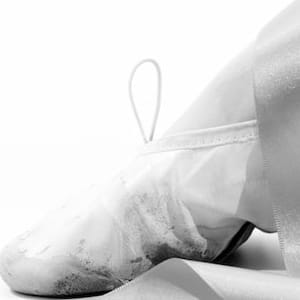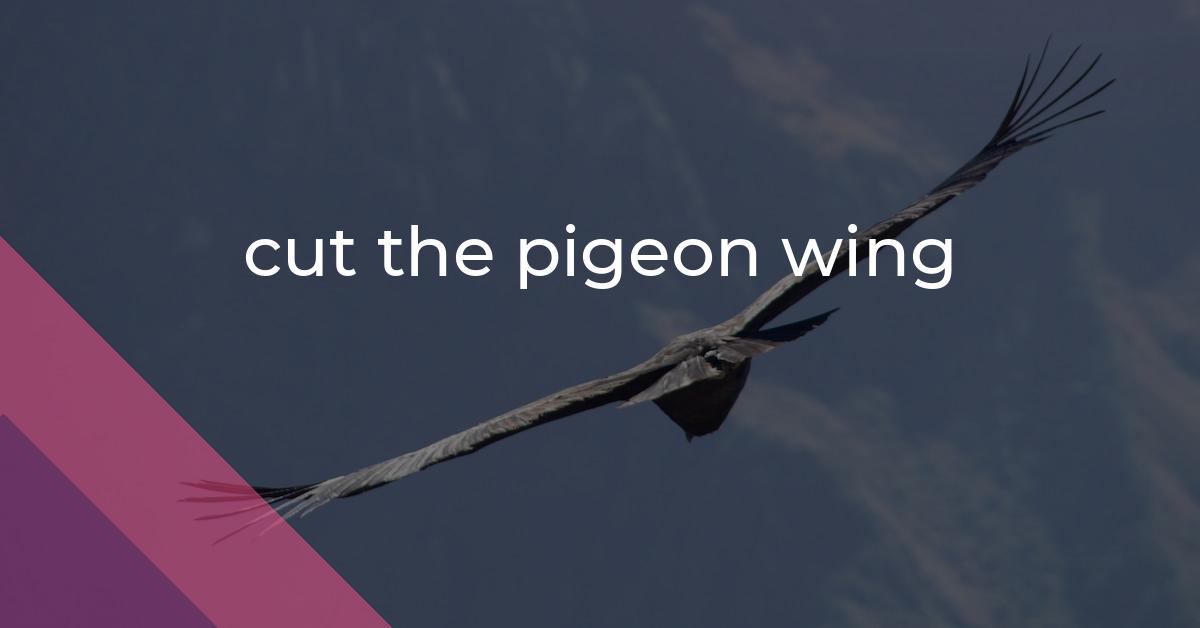cut the pigeon wing: Idiom Meaning and Origin
What does ‘cut the pigeon wing’ mean?
The idiom "cut the pigeon wing" means to show off or boast, often in a flamboyant or extravagant manner. It is derived from a dance move performed in the early 19th century, where the dancers would kick their legs out and flick their feet in a showy and confident manner.

Idiom Explorer
The idiom "knock someone over with a feather" means to greatly surprise or astonish someone to the point where they are rendered speechless or unable to react.
The idiom "knock someone down with a feather" means to greatly surprise or shock someone. The use of the feather emphasizes how unexpected or unbelievable the news or event is.
The idiom "go fly a kite" is an informal way of telling someone to go away or to leave you alone, often used when you are annoyed or frustrated with them.
The idiom "fly the coop" means to escape or leave a place abruptly, often used to refer to someone leaving a difficult or confining situation quickly.
The idiom "fly off" means to leave or depart quickly, often with great speed or urgency.
The idiom "flutter in the dovecote" means to cause a stir or create excitement and unrest among a group of people or in a particular situation.
The idiom "flip the bird" means to make an offensive gesture by raising the middle finger as a sign of disrespect or contempt.
The idiom "flight of fancy" refers to an impractical or extravagant idea or notion, often involving imagination or dreaming, that is unlikely to be accomplished in reality.
The idiom "fine feathers make fine birds" means that a person's appearance or external qualities can deceive others into thinking they possess admirable qualities or skills. However, this may not always be the case, as true value lies within a person rather than their outward appearance.
"Flights of Fancy: Decoding the Dance"
The idiom "cut the pigeon wing" is a lesser known phrase that has its origins in the early 19th century. It represents a dance move that was popular during that time. The idiom itself carries a specific meaning and conveys a sense of action and movement, which allows for a more detailed exploration.
The phrase "cut the pigeon wing" is a dance-related idiom that emerged during the early 19th century in the United States. It refers to a specific dance move in which the dancer's foot is thrusted forward and diagonally while the opposite leg kicks back and to the side. This movement is said to resemble the flapping of a pigeon's wing, hence the name of the idiom. This particular dance move showcases the skill and precision of the dancer.
Historical records suggest that "cut the pigeon wing" was primarily associated with African American slave dancers in the South. These dancers would often perform at social gatherings and celebrations, showcasing their skills and creativity through various dance moves, including the pigeon wing. The idiom became a way to describe a distinctive dance move that was highly regarded at the time. The African American communities in the South played a significant role in the development and evolution of this idiom.
Over the years, the meaning of the idiom "cut the pigeon wing" has evolved. While originally referring to a specific dance move, it gradually began to encompass a broader sense of performing with grace, skill, and style. The idiom was not limited to dancers anymore, but extended its usage to describe any impressive or flashy action performed with precision. This evolution in meaning allowed the idiom to transcend its dance origins and become a part of everyday language.
Similar to the idiom "cut the pigeon wing," there are other idioms that use the imagery of wings and cutting to convey different meanings. One such idiom is "clip someone's wings." This idiom is used to describe limiting or restricting someone's freedom or abilities. Just as a bird with clipped wings cannot fly freely, this idiom suggests that someone's potential or capabilities have been curtailed. While "cut the pigeon wing" is focused on the physical act of dancing, "clip someone's wings" takes a metaphorical approach to convey a similar idea.
Another related idiom is "cut up." This idiom has a different meaning altogether and is not directly connected to the dance-related origins of "cut the pigeon wing." "Cut up" is used to describe someone who is being playful, funny, or entertaining by making jokes or acting in a humorous manner. This idiom suggests that the person is cutting up the atmosphere with their lively antics, much like a skilled dancer cutting up the dance floor.
Although the popularity of the idiom "cut the pigeon wing" waned over time, it remains an important part of the cultural and linguistic history of the United States. It serves as a reminder of the influence of African American culture on American idiomatic expressions and the integral role that music and dance played in slave communities. By understanding the origins and evolution of this idiom, we can gain a deeper appreciation for the diverse and vibrant tapestry of American language and culture.
While the precise origins of the phrase and its connection to African American culture are well-documented, there are still possibilities for further exploration. The idiom "cut the pigeon wing" invites us to delve into the rich history of dance and music, as well as the impact of cultural exchange and assimilation on linguistic expression. By examining the roots of this idiom, we can gain a deeper understanding of the intricate layers that make up the language we use today. This exploration allows us to not only appreciate the beauty and diversity of idiomatic expressions, but also to connect with the stories and experiences of those who have shaped our shared culture and history.
Example usage
Examples of how the idiom "cut the pigeon wing" can be used in a sentence are:
- After the successful launch of their new product, the company's sales team was ready to cut the pigeon wing and celebrate their achievement.
- The talented dancer mesmerized the audience with her graceful moves, especially when she would suddenly cut the pigeon wing, leaving everyone in awe.
- As a sign of victory, the winning team captain would often cut the pigeon wing in a triumphant gesture during the award ceremony.
Analysis:
The idiom "cut the pigeon wing" is used to describe a triumphant or celebratory gesture or action. It originated from the dance move known as the pigeon wing, which was popular in the early 19th century. During this dance move, the dancer would quickly cross one leg in front of the other, creating a fluttering wing-like motion, resembling that of a pigeon in flight.
In modern usage, "cut the pigeon wing" is a figurative expression to indicate someone's energetic or jubilant action, typically in response to an accomplishment, success, or victorious moment. It signifies a display of confidence, joy, or triumph.
More "Dance" idioms



